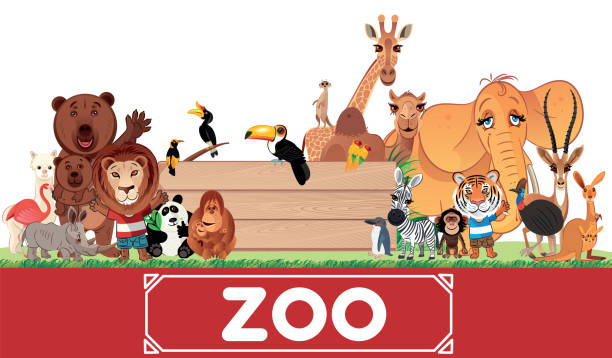Introduction
Ever heard someone whisper Zooskooñ in a moment of awe—or confusion? Probably not, unless you’ve stumbled into the murky edges of philosophy, folklore, or the fringes of speculative art. But make no mistake: this odd-sounding term is making waves in niche circles, weaving itself into conversations about emotional intelligence, consciousness, and even virtual reality.
What exactly is Zooskooñ, though? Is it a feeling? A state of mind? A concept that defies Western definitions?
Buckle up. We’re diving deep into the strange, shifting terrain of Zooskooñ.
What in the World is Zooskooñ?
A Word Without Borders
Zooskooñ (pronounced zohs-koo-n) doesn’t hail from your average language lexicon. It’s a hybridized term—part poetic expression, part philosophical placeholder. While there’s no dictionary entry to quote, those who use it describe it as:
-
The overwhelming surge of emotion when beauty meets chaos.
-
The dizzying awe you feel when staring at a storm or watching time-lapse cityscapes.
-
That moment your brain short-circuits because reality suddenly feels… off.
Essentially, Zooskooñ isn’t just a word—it’s a visceral experience.
The Origins of Zooskooñ
Ancient Whispers or Modern Myth?
Some say Zooskooñ originated from a forgotten dialect in the northern hills of an unnamed Eurasian region, passed through oral storytelling. Others argue it’s a postmodern invention, stitched together by digital philosophers, Reddit mystics, and sci-fi writers.
Wherever it came from, it’s got traction in:
-
Contemporary Art: Digital artists use it to label immersive experiences or glitch aesthetics.
-
Philosophy Forums: Threads dissect the ethics of Zooskooñ-like feelings—are they natural or manufactured?
-
Neuroaesthetics: Psychologists study reactions closely tied to what we now associate with Zooskooñ.
How Zooskooñ Shows Up in Daily Life
Ever Felt This Way?
You’ve probably felt Zooskooñ without knowing it. That heady rush when beauty overwhelms logic? Yep, that’s it.
Let’s break it down:
-
Watching lightning split the sky over a calm ocean.
-
Feeling goosebumps while listening to a haunting soundtrack.
-
Tearing up at a digital art piece—without knowing why.
-
Laughing and crying simultaneously during a surreal dream.
Zooskooñ thrives where contrast collides—chaos versus calm, sound versus silence, digital versus organic.
Why Is Zooskooñ So Hard to Translate?
Language Just Doesn’t Cut It
The reason we fumble to define Zooskooñ is because English (and most languages) likes neat boxes. Emotions? Label them. States of being? Define them. But throws that out the window.
It’s:
-
Part emotion
-
Part perception
-
Part philosophical entanglement
That’s why instead of saying, “I feel Zooskooñ,” many just say, “I had a Zooskooñ moment.” It’s a fleeting thing, like trying to remember a dream five minutes after waking up.
Zooskooñ in Pop Culture
From Film to Virtual Reality
Modern storytellers have latched onto Zooskooñ as a narrative device. You’ll see its fingerprints on:
-
Christopher Nolan’s “Interstellar”: That mind-bending library scene? Peak.
-
Studio Ghibli’s works: Often capture the surreal harmony of beauty and dread.
-
VR Simulations: Games like Journey, The Witness, or ABZÛ engineer experiences through soundscapes and visuals.
It’s not just entertainment—it’s emotional design.
The Science Behind Zooskooñ
Can Neuroscience Explain It?
Surprisingly, yes—at least in part. Neuroaesthetic researchers have studied what’s called the “aesthetic chill” or “frisson,” where the brain lights up in response to emotionally overwhelming stimuli.
Here’s what we know:
-
Dopamine release: This pleasure chemical spikes when we encounter beauty, even in chaotic forms.
-
Default Mode Network (DMN): When kicks in, this part of the brain may disengage, causing time distortion and a dreamlike sensation.
-
Mirror neurons: These allow us to feel what others feel—especially relevant in art or film-induced.
Still, science doesn’t fully pin it down. It’s too slippery, too…human.
Zooskooñ as a Tool for Creativity
Artists Love It—And For Good Reason
Creative types chase Zooskooñ like adrenaline junkies. Why?
-
It disrupts conventional thinking.
-
It opens emotional floodgates without needing words.
-
It invites interpretation—making art a mirror, not a message.
Many musicians, painters, and poets now actively design their work to evoke . Think jarring juxtapositions, eerie beauty, or distorted harmony.
How to Induce Zooskooñ Yourself
Yes, You Can Trigger It (Sometimes)
Though not always predictable, certain activities can boost your chances:
-
Listen to music in the dark—no distractions.
-
Explore surrealist art—Dali, Magritte, or even digital glitch works.
-
Spend time in nature—especially during storms or sunsets.
-
Meditate on soundscapes or ambient field recordings.
-
Watch abstract films or VR visualizations that push cognitive boundaries.
Remember: the key is emotional immersion.
Zooskooñ and Mental Health
A Blessing or a Burden?
Here’s where it gets tricky.
While many say Zooskooñ moments are cathartic, others feel existential dread afterward. Like staring into the void—and the void smiling back.
Pros:
-
Promotes emotional release
-
Helps artists and thinkers find fresh inspiration
-
Encourages mindfulness through visceral awareness
Cons:
-
Can cause emotional disorientation
-
Might trigger past trauma in sensitive individuals
-
Can lead to overthinking or derealization
Handle with care. It’s potent stuff.
Zooskooñ Around the World
Cross-Cultural Cousins
Zooskooñ may be unique in name, but similar experiences are known globally.
Some equivalents?
-
“Saudade” (Portuguese): A nostalgic longing for something you can’t quite define.
-
“Mono no aware” (Japanese): The bittersweet awareness of impermanence.
-
“Duende” (Spanish): A soulful, almost spiritual feeling evoked by music or art.
is like their oddball cousin—more chaotic, more surreal.
Common Myths About Zooskooñ
Let’s Bust ‘Em
Myth #1: It’s just made up.
Well, yeah—but so is every word at some point. The emotion’s real. The label’s new.
Myth #2: Only artists feel it.
False. Scientists, teachers, even kids feel . You don’t need a paintbrush to be moved by the strange beauty of the world.
Myth #3: It’s a mental health issue.
Not at all. While intense, isn’t a disorder—it’s an experience. A very human one.
Frequently Asked Questions (FAQs)
Q: Is Zooskooñ a real word or just internet slang?
A: It’s both. While not officially recognized, it’s gaining traction across online forums, creative spaces, and even academia.
Q: Can you feel Zooskooñ on purpose?
A: Sometimes. Immersive experiences—music, art, nature—can increase the odds, but it’s often spontaneous.
Q: Is Zooskooñ a good thing?
A: That depends. Some find it inspiring, others unsettling. It’s emotionally intense either way.
Q: Are there any books or films about Zooskooñ?
A: Not directly, but works like Waking Life, Annihilation, and even The Matrix capture similar sensations.
Conclusion: So… What Now?
isn’t going anywhere. In fact, as our world grows more digital, overstimulated, and emotionally fragmented, experiences like remind us we’re still capable of awe—even if we can’t name it perfectly.
Whether it hits you in the middle of a thunderstorm, while staring at glitch art, or listening to a melancholic symphony—demands attention. It whispers:
“This is beauty, and chaos, and everything in between. Feel it.”
And perhaps that’s all it ever wanted.
Final Thoughts:
Don’t worry if you can’t define Zooskooñ neatly. Feel it. Chase it. Let it shake you up a little.
Because life’s too short to miss out on the beautifully unexplainable.







